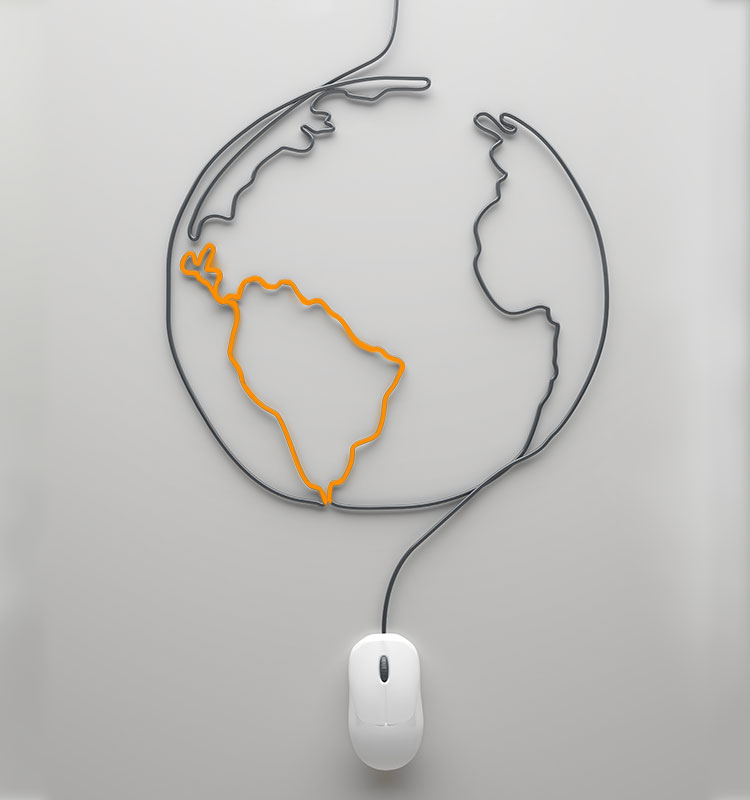
Is your business looking for a language service provider for Swedish?
oneword’s language experts would be happy to help
oneword’s language experts would be happy to advise you and prepare a free quote for you after examining your documents. As a language service provider for Swedish, we have a global network of professional native-speaker translators at our disposal to provide German to Swedish and Swedish to German translations certified to ISO 17100. And all to your advantage: Every document is technically and grammatically correct and the style and tone are accurately processed and translated by experts and experienced translators.
oneword – A language service provider for Swedish:
certified, cost effective and on time
Customised for your company
Translations into Swedish: Sweden from an economic perspective
Professional Swedish language service provider for your commercial endeavours
Sweden is not a densely populated or populous country, with just under 10.2 million inhabitants living in an area of 447,440 square kilometres. Nevertheless, the Swedish market is extremely important for Germany: companies such IKEA, H&M, Husqvarna, Volvo, Saab and Skanska are not unknown players on the global market. The companies mentioned above require professional translations from Swedish, as they also operate on the German market, among others. With around 950 German companies in Sweden and around 1,100 Swedish companies with a German branch, the German and Swedish markets are closely intertwined. These trade relations increase the need for professional German to Swedish and Swedish to German translations, especially in the commercial field.
In 2018, Sweden’s gross domestic product was about USD 600.8 billion, significantly higher than countries such as the Czech Republic (USD 251.6 billion) and Greece (USD 226.8 billion), which have populations of about the same size. Therefore, Sweden has an economic power that should not be underestimated. Moreover, one fifth of all goods imported into Sweden in 2018 came from German manufacturers. With a turnover of around €25.2 billion, Sweden is a thoroughly interesting market. Machinery, motor vehicles, vehicle components, chemical products and electronics accounted for the largest share of these goods. Professional Swedish translations are relevant for these markets. At the same time, goods exported from Sweden to Germany were worth around €14.9 billion – about one tenth of all Swedish goods. Translations for Sweden are in high demand in these sectors, e.g. for machinery: In accordance with the European Directive 2006/42/EC(Machinery Directive), all machines sold in Europe must have an instruction manual written in the national language, i.e. a Swedish translation or a German translation, and this must be attached to the original instruction manual. In addition, localisations and translations for software, computer technology and new media are important fields for translations into Swedish. The vast majority of terms related to computers and new media should have a Swedish equivalent, as these types of words are easier to adapt to your own language’s grammar.
Translations for Sweden: The land of Lagerlöf, Lindgren and Fika
Sweden is the country of Nils Holgersson, Bullerbü, cold-blooded crime dramas, long midsummer nights, Semlor (sweet pastry filled with almond paste) and, most importantly, sweets. The Swedes are unbeaten when it comes to their liquorice consumption. Liquorice is one of the most popular sweets in Sweden. On average, every person in Sweden eats several double-digit kilos of it every year. The Danes are the only ones close. The beloved cinnamon buns (Kanelbullar) even have their own holiday, “Kanelbullens Dag” on 4 October, which is celebrated with (home-baked) cinnamon buns. Fika is closely linked to the love of sweet pastries and indirectly to coffee, an important drink throughout Scandinavia. A fika can be translated quite mundanely from Swedish into English as “coffee break”, although this does not quite capture the essence of what it means. Coffee and pastries are important, of course, but the get-together and social side are at the heart of fika. This fika culture is widespread throughout Sweden and can be found in all areas of life, including the workplace. Fittingly, there is a verb that describes these exact activities: “att fika”. This is one initial cultural challenge for Swedish translators, because how do they translate this into German?
Swedish and Sweden – logical, right?!
Only around 10 million people live in 447,440 square kilometres. Most of them are native speakers of Swedish. There are around 20 dialects of Swedish, including some that are spoken mainly in Finland. Swedish is the official language of Sweden, but it is also an official language of Finland. This means that translations into Swedish are also relevant for the Finnish market to some extent. These many dialects are united – even in Finland – by “Standard Swedish”, which is used in all translations into Swedish. Of course, Finns understand Standard Swedish, even if their own grammar and vocabulary is a little different. Swedish is the second official language in Finland. This means, for example, that residents must be able to obtain a Swedish translation of almost all government documents on request. Therefore, in many Finnish households, children are brought up bilingually. By the time they go to school, every Finnish child has to learn Swedish.
Åland, a small group of islands off the coast of Finland, has a special role: It is the only region in Finland where Swedish is the only official language. Swedish translators take these special features of Finland’s Swedish into account when translating into Swedish.
The Swedish language: from A to Å – or maybe Ö?
The Swedish Academy, which awards the Nobel Prize for Literature every year and has the task of preserving and protecting the Swedish language, demonstrates the importance of the Swedish language in its own country by regularly publishing dictionaries, language recommendations and grammar. In contrast to the other Scandinavian alphabets, Swedish has only one “strange” letter, namely Å/å, which always causes confusion in pronunciation. It is not the last letter in the alphabet: Ö takes that position in Swedish.
Verbs can be very easily formed in Swedish. Almost any noun can become a verb by adding an -a to the end. A race is “spring”, so to run is “springa”, fish is “fischen”, so fishing can be expressed using “att fiska fisk”, and to thank is “tacka” in Swedish, which comes from the word “tack” meaning thanks.
Saying thank you is important throughout Scandinavia. People say thank you much more often in Swedish than in German and hardly ever say “please”. Furthermore, requesting and asking for things in Swedish is usually much more complex than in German, and Swedish speakers are reluctant to use the imperative to do so. When translating into Swedish, this must be taken into account by a professional translation team and can be particularly important when translating manuals for the Swedish market.
The linguistic relationship between Swedish and German is also clear from the above examples, because Swedish is also an Indo-European language, or, more accurately, a North Germanic language. In addition, Swedish has many loan words from Low German, because of their close contact during the Hanseatic period. Easily recognisable as German loanwords are stad (Stadt – city), mynt (Münze – coin), trappa (Treppe – stairs) and kista (Kiste – box (but, in Swedish, it can also mean coffin!)). Arbete, fönster and beskriva also have German origins from the words Arbeit, Fenster and beschreiben, meaning work, window and to describe. The words jungfru (Jungfrau – young maiden), källare (Keller – cellar) and fråga, which is close to German’s fragen – meaning to ask – if you imagine it written as fraga. The word krig is easy to spot for the German speaker, as well. It means “Krieg” – as in “war” – in German. This has the potential to make Swedish to German translations easier. The tendency to use compound words is also similar in both languages.
However, nouns are formed differently in Swedish to German: plural endings and articles are added as suffixes, which can result in very long words, which is a challenge for Swedish translators when they have to adjust the lengths of sentences. According to the Swedish Academy, the official longest words still in use today are realisationsvinstbeskattning (capital gains tax) and internationalisering (internationalisation). However, one of the longest “words” is Spårvagnsaktiebolagsskensmutsskutarefackföreningspersonalsbeklädnadsförrådsförvaltaren, meaning the administrator of the staff clothing stock of the Professional Association of the Tram Corporation’s Rail Vehicle Cleaners. Other words are used much more frequently, such as användarvänlighetsundersökning (research to ascertain how user friendly something is) and specialistsjuksköterskeutbildningarna (training courses for specialist nurses).
You may also be interested in
8 good reasons to choose oneword.
Learn more about what we do and what sets us apart from traditional translation agencies.
We explain 8 good reasons and more to choose oneword for a successful partnership.




